Heady Wine To Savor – S D Burman & Mohd. Rafi
- K. V. Ramesh | www.rammesh.co.in
Throughout human history, man has discovered a variety of substances and spirits whose sheer variety boggles the mind. One kind of spirit that gives a kick that surpasses any other substance is a unique brand of music produced by the beautiful musical combination – SD Burman as Music Director and Mohammed Rafi as the singer. Ramesh KV re-lives the intoxicating years, taking us through the magical output of this duo that holds a unique place in the minds of Hindi music lovers.
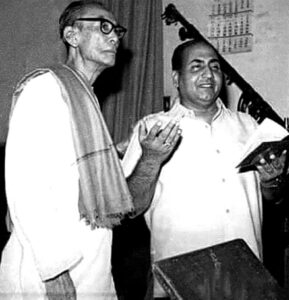 Like many of his contemporaries, S.D. Burman started with his musical journey in Hindi films in the mid-1940s, where female voices ruled. Shamshad Begum and Geeta Dutt nee Roy were the two voices usually associated with Dada Burman. SD Burman’s “Lota” had still to make her presence felt. The eternal magic of ‘Thandi hawaayen’ was just around the corner. The trend for male voices was seemingly straightforward – to replace or imitate Saigal.
Like many of his contemporaries, S.D. Burman started with his musical journey in Hindi films in the mid-1940s, where female voices ruled. Shamshad Begum and Geeta Dutt nee Roy were the two voices usually associated with Dada Burman. SD Burman’s “Lota” had still to make her presence felt. The eternal magic of ‘Thandi hawaayen’ was just around the corner. The trend for male voices was seemingly straightforward – to replace or imitate Saigal.
Mohd. Rafi sang his first song for S.D. Burman in ‘Do Bhai’ (1947). The phrasing and singing style of ‘Duniya mein meri aaj andhera hi andhera’ is very Saigal inspired. In a movie dominated by two Geeta Roy killers, ‘Yaad karoge’ and ‘Mera sundar sapna beet gaya’ (both sung and emoted with exquisite pain), it was but natural that this Rafi song sank without a trace.
From 1947 to 1954, Rafi sang a few songs for S.D. Burman. In 1947 it was just one (Do Bhai). 1951 had one in ‘Ek Nazar’ and two in ‘Naujawan’. 1953 had one song in ‘Jeevan Jyoti’. A total of five songs in seven years. And then something happened in 1955 – with ‘Devdas’. For Devdas’s tragic story, Talat’s voice perfectly reflected the pain and loss when he sang ‘Mitwa’ and ‘Kisko khabar’. Yet in ‘Kahin ghani chhanv hai / Manzil ki chaah me’, Dada’s minimalist instrumentation beautifully sets the tone for Rafi, describing the two loves and dilemmas of ‘Devdas’. Rafi’s bare-bones humming set to Dada’s equally minimalist orchestration highlighted the entire aura of wistfulness that was the essence and soul of the song. Magic was born. The song picturization also reflected this as Devdas’s “raahis” – his two loves – unknowingly crossed each other parts in search of a “manzil”.
1957 had Miss India with one song, but it was ‘Nau Do Gyarah’ that set the magical tone for Rafi’s romanticism under S.D. Burman – after four S.D. Burman-Dev Anand hits House No. 44, Munimji, Funtoosh, and Paying Guest. While Kishore Kumar crooned wonderfully ‘Hum hain raahi pyar ke’ and teased and chased in ‘Aankhon mein kya jee’, Rafi did full justice to the two duets. ‘Aaja panchhi akela hai’ had a mischievous romantic quality. Dev Anand has been forced to spend the night inside the bathroom while his lady Kalpana Kartik is in the bedroom. The singing and the lyrics reflect this, especially when Rafi says, “Mar gaye hum nikla dum mar gaye hum” At the same time ‘Kali ke roop mein’ was both a plea of reason and eve-teasing combined into one. Then came ‘Pyaasa’.
Sahir Ludhianvi’s gut-wrenching lyrics are set to a minimalist score by S.D. Burman was epitomized by three serious songs, one light romantic duet, one comic song for Johnny Walker, and two solos for Geeta Roy-Dutt. The inner helplessness and agony of the poet-protagonist are rendered in the climatic ‘Ye mahlon ye takthon’. The hopelessness of ‘Kahaan hai, kahaan hai’ can give goose-pimples to anyone – a question to all self-respecting patriots to rise and question themselves and the state of the nation. All was not well ten years after independence. Then a recitation sans any instrumentation – ‘Gham is Qadar’ and ‘Tang aa chuke hain zindagi se hum’ all but shatters any illusion of hope. Lyricist poet Sahir Ludhianvi himself couldn’t have done better in asking the question – voiced by Rafi, this blistering poetry becomes a comment on human beings and their fickleness.
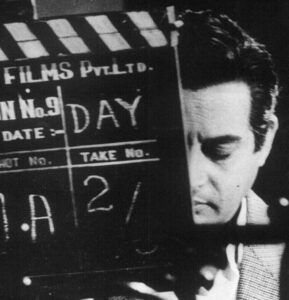
The floodgates seemed to have burst, which set the ball rolling for the combo to grow. It could be seen that it was a combo, here to stay. Dada’s best output was always reserved for Dev Anand and his home production Navketan. The next iteration of this team bore this out with the 1958 Navketan production “Kaala Paani”. ‘Hum bekhudi mein tumko pukaare chale gaye’ has a mesmerizing and reflective quality in the singing, befitting the theme of the hero Dev Anand, apparently wooing the vamp but reflecting on his jailed father. The tune based on Dada’s Bengali song ‘Ghum bhulechi’ has Rafi crooning softly, something Rafi reserved especially for Dev Anand and S.D. Burman. Even in films where the score was not by Dada Burman, Rafi would invariably have his butter-soft singing voice specifically for Dev Anand (Maya, Hum Dono, and Asli Naqli being three such examples). And what to say of the evergreen teasing duet ‘Achhaji main haari chalo maan jao na’?
Why use the word butter soft for this style of singing? Two reasons. Dev Anand’s image as a sophisticated city man, polished in his speech has to be reflected in the singing. The best way of expressing this personality in the song was to modulate his voice softly. A great deed by Rafi Saab in his encounters with Dev Anand both inside and outside the Navketan camp. The second reason? The Shammi Kapoor – “Yahoo phenomenon” had not yet happened fully (but that’s another story also highlighting the virtuosity of Rafi Saab).
1959 brought the tour de force that was ‘Kagaz Ke Phool’. On its initial release, the film was a resounding flop. Mirroring the protagonist’s condition in the movie, Kumar Saab, Guru Dutt, the producer-director, also fell into a self-destructive pattern. History has since vindicated his artistic vision and the Hindi Film Industry’s only harsh look at itself. This introspection would not have been possible without three things: the stunning black and white photography by V. K. Murthy, the empathetic performance as the troubled heroine by Waheeda Rehman, and of course, the music by S.D. Burman.
Geeta Dutt’s ‘Waqt ne kiya kya haseen sitam’ is a comment for all times about the cruelty of time in relationships. But a more prominent and much bitter truth comes in the shape of Rafi saab’s 10-minute tour de force ‘Dekhi zamane ki yaari’. Kaifi Azmi’s lyrics were harsh, uncompromising, and a realistic comment on the nature of human beings and human relationships in a cruel world, especially the here-and-now world of films. The song is a clear vindication of the saying in the film industry – you are only as good as your last hit. This song repeats through the film as a motif at crucial times: starting as a slow, reflective version, quickly changing to a “bright” version where the director – in a flashback – sees his success and the singing, reflects the “good times”, ultimately reaching a crescendo in asking him to run away, the beseeching ‘Ud jaa, ud jaa pyaase bhanwre’. The hero-protagonist does run away through the vehicle of death, and also amply demonstrates the creative enmeshing of the inputs from the lyricist, the director (Guru Dutt himself), and of course, the music/singing. Johnny Walker provides comical relief with ‘Hum tum jisey kehta hai shaadi’, but it fades into insignificance in the face of such powerful lyrics and emoting by Rafi Saab. Time has vindicated the bitter truth of these lyrics to be true. ‘Bichhde sabhi baari baari’ indeed remains a painful truth and comment on human beings’ whimsical and selfish nature, especially in the film industry.
1959 had Solva Saal, Sitaron Se Aage and Sujata. In a film dominated by a feminine theme, the female lead and, of course, the female singers, Rafi’s satirical ‘Andhe ne bhi sapna dekha’, had no choice but to fade into oblivion. Of the three Rafi songs in Insaan Jaag Utha, ‘Chand sa mukhda’ clearly stood out for its simple tune and excellent vocalization. 1960 remains a high-water mark in quantity for the Rafi-S.D. Burman combo.
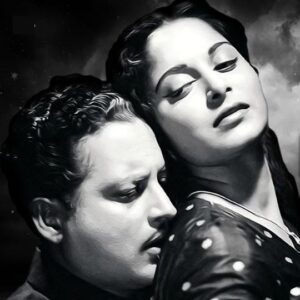 S. D. Burman has eight releases, of which five were Dev Anand films, and the two others were Kishore Kumar starters. Miya Beewi Raazi, Ek Ke Baad Ek, Manzil, Kaala Bazaar, and Bambai Ka Babu saw the combo in an incredible form, further enhancing Dev Anand’s urbane and urban credentials. Any Dev Anand release meant that we could expect the music to be of the highest quality. Ek Ke Baad Ek was supposedly done by Dev Anand on Prime Minister Nehru’s request to highlight the alarming issues of population explosion. Remember the teasing ‘Ye jhijhakne’ ending with ‘Thumak thumak chale hai jab’? Bambai Ka Babu had two terrific duets – the magical ‘Deewana mastana hua dil’ and the underappreciated Punjabi folk music inspired ‘Pawan chale to uthe nadi mein lehar si’. But it was the solo ‘Saathi na koi manzil’ that took the accolades. If any song at that time epitomized the dilemma of a hero torn apart by fate, this was the one. Rafi’s remarkable Dev Anand voice makes this plea to a silent world and nature, a treasure to cherish.
S. D. Burman has eight releases, of which five were Dev Anand films, and the two others were Kishore Kumar starters. Miya Beewi Raazi, Ek Ke Baad Ek, Manzil, Kaala Bazaar, and Bambai Ka Babu saw the combo in an incredible form, further enhancing Dev Anand’s urbane and urban credentials. Any Dev Anand release meant that we could expect the music to be of the highest quality. Ek Ke Baad Ek was supposedly done by Dev Anand on Prime Minister Nehru’s request to highlight the alarming issues of population explosion. Remember the teasing ‘Ye jhijhakne’ ending with ‘Thumak thumak chale hai jab’? Bambai Ka Babu had two terrific duets – the magical ‘Deewana mastana hua dil’ and the underappreciated Punjabi folk music inspired ‘Pawan chale to uthe nadi mein lehar si’. But it was the solo ‘Saathi na koi manzil’ that took the accolades. If any song at that time epitomized the dilemma of a hero torn apart by fate, this was the one. Rafi’s remarkable Dev Anand voice makes this plea to a silent world and nature, a treasure to cherish.
Kaala Bazaar pretty much saw to it that Manzil was more or less consigned to the back seat because of the two great solo outings. Both were set to Dada’s minimalist style, where only the singer’s voice dominates the song. While ‘Apni to har aah ek’ resembles a prayer to the Almighty, it is picturized in a romantic tone on a train, where the hero Dev Anand is seeking the blessings of the ‘uparwala’, the heroine, sleeping above his berth in full view of her doubting parents on the lower berth. This contrasts with the frenetic energy of blind love of the immortal ‘Khoya khoya chand’ again set in Burman Dada’s minimalist style. It seems that the innocent rain song of Geeta- Rafi ‘Rimjhim ke tarane leke aayi barsaat’ was removed from Kala Bazaar. What a beauty is the Manzil Geeta-Rafi teaser ‘Chupke se miley pyaase pyaase’! An unusual composition wherein Rafi and Geeta Dutt are having a ball of a time. This movie had other top male singers, such as Hemant Kumar (Yaad aa gayi who nasheeli nigahen) and Manna Dey ‘Ai Kaash chalte mil ke, singing for Dev Anand.
1962 was a bit of a lean year with only one release Baat Ek Raat Ki. The typical sawaal-jawaab S.D. Burman Asha-Rafi duet ‘Jo ijaazat ho to ek baat kahun’ in Baat Ek Raat Ki didn’t set the radios on fire, neither did the philosophical cycle song ‘Akela hoon main is duniya mein’. That honor belonged to the comical Manna Dey song ‘Kisne chilman se maara’ and the romantic Hemant Kumar number ‘Na tum hamey jaano’. The lone Rafi solo ‘Akela hoon main’ was good but somehow seemed not to make it to the public’s mind. No matter – The best was yet to come.
1963 brought two giant killers from the combo: ‘Meri Surat Teri Aankhen’ and ‘Tere Ghar Ke Saamne’. In the opinion of this writer and many other S.D. Burman fans, any of these two should have resulted in some award for S.D. Burman. But this was not to be so. There is a famous story of Manna Dey telling a dejected Dada of the sad news that ‘Meri Surat Teri Aankhen’ didn’t win any awards. Dada was sick in a hospital with an eye infection, and through his bandaged eyes, Manna saw the tear streaks. Clearly, popularity vs quality is a puzzle that is true in awards selection, then as now.
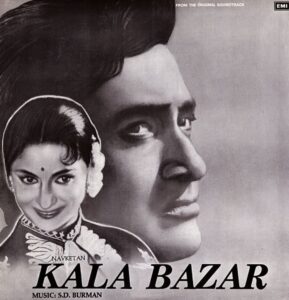
Rafi singing for Ashok Kumar in blackface (!) was brilliant. ‘Tere bin soone nain hamaare’ directly contrasts with the frenetic energy of a person’s soul dancing ‘Tikdha dheegi dheegi’. “Tere Ghar Ke Saamne” was, is, and will continue to remain the prototype for ANY light romantic comedy peppered with wonderful songs – three solos and two duets. No wonder the two female solos, one each by Lata and Asha, didn’t register that much in the popular psyche. Rafi fans and Dev Anand fanatics vary over which are their favorites. Is it ‘Tu kahaan yeh bata, a street-by-street odyssey where the lover searches for his ‘hidden’ love, ably acted by a flamboyant Dev Anand? Is it the uniquely whispered ‘Dil ka bhanwar kare pukaar’ shot inside an ever-spiraling Qutub Minar? Is it the beseeching of ‘Sun le tu dil ki sada’? Or even the titular challenge of building a house opposite the heroine’s home or the pet theme of romance-centered ‘Dekho rootha na karo’? This is one of the Navketan films where Kishore Kumar, Dev Anand’s “ghost” voice, is conspicuous by his absence, and Rafi does abundant justice to all the songs. Comfortably nestled in the romantic idiom of the film, Rafi Saab brings forth the multitude of emotions of the hero going through the tumultuous relationship with his girlfriend while their respective fathers, sworn enemies of each other, are at loggerheads.
1964 had ‘Benazir’, Ziddi, and ‘Kaise Kahun’. Benazir sank without a trace but not before leaving behind a polished gem in the shape of the romantic longing of ‘Dil mein ek jaane tamanna ne jagah paayi hai’ What smooth vocals in this killer and ‘Le gayi ek haseena, haay dil!’. ‘Kaise Kahun’ had the soft exhortation to live life today with ‘Zindagi tu jhoom le zara’ while the duet, or should we say trio song with S.D. Batish and Suman Kalyanpur in ‘Manmohan man mein’ seem like an opportunity for Rafi Saab to come forth and exercise his flair and training in classical music. 1964 also had the Joy Mukherji starrered ‘Ziddi’. Rafi had three solos and one duet, but Lata ruled the airwaves with ‘Raat ka sama’ and ‘Yeh meri zindagi ek paagal hawa’. Not that ‘Pyar ki manzil mast safar’ or ‘Jaanu kya mera dil’ or ‘Teri surat se nahin milti’ had anything lacking. It just didn’t register in the consciousness. In seventeen years, the relationship had gone from shaky to absolutely confident.
1965 is perhaps the year in which Dada Burman has been immortalized. Any top ten of the Rafi-SD Burman compilations should and must have at least four songs from the releases Guide’ and ‘Teen Deviyan’. One, inside the Navketan camp and another outside it, though only peripherally so.
First, ‘Guide’. There is a statement somewhere that Dada Burman has said that he would be delighted if he is immortalized for this one score. Happily, for all of us, he has been immortalized so. The Guide still holds up after so many years due to various factors: probably one of the first Dev Anand films to be shot in color, exotic location, and excellent all-around performances. Above all is the music. Three Lata solos find her in brilliant form, with the song ‘Piya tose naina laage re’ exhibition of Lata’s vocal talent and Dada Burman’s unusually imaginative orchestration entirely contrary to his “sparse” bare-bones approach in some songs.
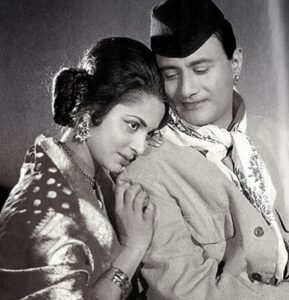 Rafi’s output in this film has to be considered the way it happens in the movie. ‘Tere mere sapne ab ek rang hain’ heralds the melancholic promise Raju (The Guide) makes to a hapless Rosie (the heroine). Ably enhanced by the lush orchestration, arrangement, and the unique melancholic feel of the saxophone (by Burman camp artiste and ace arranger Manohari Singh), Rafi cleverly balances the orchestra with his soft promise and an emphatic feel with the phrase ‘O mere Jeevan saathi’ which ‘echoes’ and keeps echoing as a theme/mirror throughout the movie, in the way the relationship between Raju and Rosie develops. ‘Din dhal jaaye’ is the killer of the trio of Rafi songs in this classic film. What emotive quality! Life and Rosie have moved on and can’t return Raju’s lost moments; Rafi Saab whispers this loss when he sings ‘apne kabhi they, ab hain paraaye’. ‘Kya se kya ho gaya’ is the natural culmination of love lost, more due to the hero’s own mistakes than anything else, ably reflected in the Shailendra line ‘hona hai aur kya’ when Raju discovers himself to be at the receiving end of a police handcuff. Clearly, ‘Din dhal jaaye’ wins with Rafi Saab’s whispered crooning for Dada Burman. A retrospective analysis of almost all Dev Anand songs points out that with Dev Anand, ‘soft’ ‘near whispered’ emotions were the rule than the prevalent ‘Yahoo’ style Rafi adopted in direct contrast with Shammi Kapoor.
Rafi’s output in this film has to be considered the way it happens in the movie. ‘Tere mere sapne ab ek rang hain’ heralds the melancholic promise Raju (The Guide) makes to a hapless Rosie (the heroine). Ably enhanced by the lush orchestration, arrangement, and the unique melancholic feel of the saxophone (by Burman camp artiste and ace arranger Manohari Singh), Rafi cleverly balances the orchestra with his soft promise and an emphatic feel with the phrase ‘O mere Jeevan saathi’ which ‘echoes’ and keeps echoing as a theme/mirror throughout the movie, in the way the relationship between Raju and Rosie develops. ‘Din dhal jaaye’ is the killer of the trio of Rafi songs in this classic film. What emotive quality! Life and Rosie have moved on and can’t return Raju’s lost moments; Rafi Saab whispers this loss when he sings ‘apne kabhi they, ab hain paraaye’. ‘Kya se kya ho gaya’ is the natural culmination of love lost, more due to the hero’s own mistakes than anything else, ably reflected in the Shailendra line ‘hona hai aur kya’ when Raju discovers himself to be at the receiving end of a police handcuff. Clearly, ‘Din dhal jaaye’ wins with Rafi Saab’s whispered crooning for Dada Burman. A retrospective analysis of almost all Dev Anand songs points out that with Dev Anand, ‘soft’ ‘near whispered’ emotions were the rule than the prevalent ‘Yahoo’ style Rafi adopted in direct contrast with Shammi Kapoor.
Next comes the other film by Navketan camp follower Amarjeet. ‘Teen Deviyan’ could have been a frothy romantic comedy about the vagaries of spreading oneself thin while seeking the attention of three women. Still, it descends instead into an overblown piece about Dev Anand, who dominates the frames from the first to the last reel, presaging his later self-obsession of the late 1970s and 1980s. In a strange twist, the character names of the hero and heroines are the same as their real names – Dev, Nanda, Kalpana, Simi. The other downer of the film is that it had an adult certificate. The limp topic was considered too ‘hot’ for those conservative times. No wonder the film didn’t do too well at the box office, but the music was a sheer delight. Showcasing hero Dev’s obsession for the three heroines, Dada Burman got Kishore to sing four songs and Rafi to sing two for Dev Anand.
In my opinion, this is one of the few albums where the two big names in playback singing play the perfect foil to each other. Kishore has the boisterous ‘Arey yaar meri tum bhi ho gazab’, the sensuous ‘Uff, kitni thandi hai ye rut’, the playful duet of ‘Likha hai teri aankhon ne’ and the magnificently sung solo ‘Khwab ho tum ya koi haqeeqaqt’. This is balanced neatly by the Tagore composition (Ami tomay jotho) inspired ‘Aise to na dekho’ and ‘Kahin bekhayal hokar’. For me, ‘Aise to na dekho’ is pure aural erotica. The “ke humko nasha ho jaaye” is truly Nasha. It is amazing how the teetotaller Rafi conveys the intoxication of blooming love. ‘Kahin Bekhayal ho kar’ gives Rafi abundant opportunity to display his expertise in the ghazal idiom, which is genuinely up Rafi’s alley and is a walk in the park for him. Dada Burman allowed both singers to flower in their respective specialties and comfort zones. For me, ‘Aise to na dekho’ belongs in any top 10 romantic compilations of Rafi.
Two years later, in 1967, came the Hollywood-style caper movie, ‘Jewel Thief’, which even today holds up to repeated viewing. Its clever “wheels within wheels” theme is neatly balanced by the ‘modern’ touches given by S.D. Burman with the result that the only ‘traditional’ song, the eternally lovely duet ‘Dil Pukare, aare, aare’ is the only excursion of Rafi in this film. (The song’s mukhda is also a clever recycle of Dada of his earlier song Tasveerein banti hai from Jeevan Jyothi (1953), the only song where Shammi Kapoor sang in his own voice)
1969 and as hard-core Kishore fans would like to say gleefully, ‘Aradhana’ happened. The movie ran close to 75 weeks in one theatre in Bombay, Rajesh Khanna was propelled into superstardom by Kishore Kumar’s voice. ‘Mere sapnon ki rani’ dominated the airwaves. If the two Rafi songs were overlooked in this atmosphere, then no one could have been blamed. Singing for Rajesh Khanna, Rafi brings forth his patented ‘butter soft’ style, which is his style while singing for Dada Burman. Only this time, it’s for tyro and future superstar Rajesh Khanna. While ‘Gunguna rahen hain bhanwre’ was for the ‘father Rajesh Khanna’, ‘Baagon mein bahaar hai’ is for the ‘son Rajesh Khanna’ who is the boisterous son and is romancing a girl who refuses to be conned into saying yes to him. Yet, they were hits in keeping with the overall “Aradhana madness”. (There was even an Aradhana saree, with a similar design as worn by Sharmila Tagore).
‘Aradhana’ also did the unthinkable, or perhaps one should say the unpardonable. In my opinion, Dada should have continued using Rafi, but this was the time of the Kishore tsunami when even heroes who used Rafi as their leading singer, like Dharmendra, and Dilip Kumar, suddenly found that they were lip-syncing to Kishore’s equally magically flexible voice. Ever the ruthless professional, Dada discarded Rafi’s velvet voice for Kishore’s malleable flexibility, following market diktats. The other release of 1969 was ‘Talash’, and its two duets had completely contrasted moods. A fresh ‘Palkon ke peechhe se’ had a more laid-back teasing quality to it. At the same time, ‘Aaj ko jhunli raat ma’ was a boisterous celebration of love. Both found Rafi in excellent form under S.D. Burman.
1970’s ‘Ishq Par Zor Nahin’ was a mediocre film reflected in its insipid commercial fortunes, but the music was a hit. The specialty of ‘Ye dil diwana hai’ is that the entire mukhda had a beautiful repeat phrasing of the same line of 4 words. If the mukhda of ‘Palkon ke peechhe se’ could move around just three notes, why not this? Both extraordinary compositions were the creations of Majrooh-S D. Here, and in the romantic ‘Mehbooba teri tasveer’, Rafi brings in the magic all over again. Away from the Dev Anand camp, his voice is similarly magical. 1971 saw Dada Burman climb the charts with ‘Gambler’, ‘Naya Zamana’, ‘Sharmilee’, ‘Tere Mere Sapne’. But in this cauldron of hit songs, only Gambler had the lone Rafi solo for Dev Anand, the wistful ‘Mera man tera pyaasa’. It was almost as if Rafi himself was beseeching Dada Burman to give him more songs. Commercial pressures and the runaway success of Kishore in his phoenix-like appearance as the new God of playback singing probably fell on deaf ears of the producers who wanted Kishore and more Kishore.
It seems appallingly sad, yet it is true that from 1971 till his death in 1975, Dada Burman used Rafi precisely four times. ‘Anuraag’ with ‘Tere nainon ke main deep’, ‘Abhimaan’ with ‘Teri bindiya re’, ‘Chupke Chupke’ with the male duet ‘Sa re ga ma’, ‘Us Paar’ with ‘Ai mere man main hun magan’. Four songs in four years. This was a reflection of the Kishore wave, and the commercial pressures both Rafi and Kishore had to deal with.
If we were to summarize, what was special about this combination can be summarized by the following observations:
- Strong melody: Rafi brought out the melody and the beauty of each of the songs. Especially in the ‘classic’ period from 1955 to 1971, when the SD-Rafi combination was at its peak.
- Mutual strength: If Dada Burman seemed to draw out Rafi’s special characteristics in singing, it also seemed that Rafi was equally intent to give something beyond his best for Dada.
- Softness: Most, if not all, of S.D. Burman’s compositions bring out and enhance Rafi’s soft singing. One can even say it’s whisper soft. (A close friend of mine calls it ‘absolute butter’)
As far as statistics go, Burman Dada used Kishore in 109 of his 647 songs while Rafi sang 88 songs. This is close but clearly shows who was the “house favorite”. Of these 88 songs, 30 are for Dev Anand, while Kishore sang 35 for Dev Anand. This speaks of Dada’s balancing act in giving the best to each singer.
Perhaps the swan song of the SD-Rafi relationship can be best summarized from the song sung by Manna Dey in ‘Us Paar’ (1975) Piya maine kya kiya, Mujhe chhod ke jaiyo na, Manwa poochh na paye ho, ho gayi kaun si bhool re, Chhod gaya mera saath ho, beech bhanwar mein, Roothhe hain na jane kyun, koi to samjhaiyo haan’.
The feelings conveyed by Yogesh’s lyrics indeed could have been applied to Rafi. He must have been probably asking these questions in his head but was too humble and non-judgmental to vocalize them.
S.D. Burman – Mohamad Rafi. This is one combination that is a heady wine that grows more and more mature with each passing year. If intoxication is what one is looking for, then I would strongly recommend this heady wine. They don’t make them like that anymore.


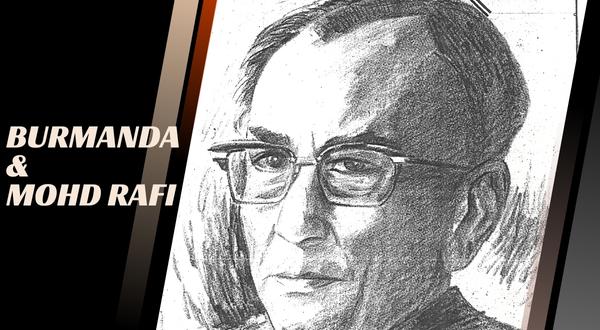
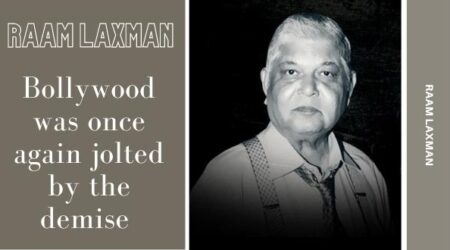
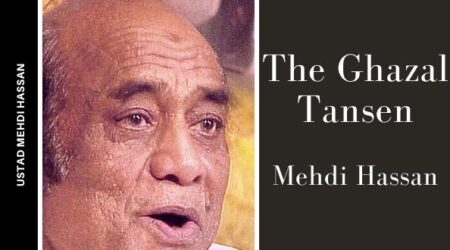
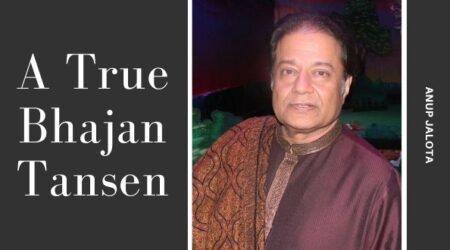
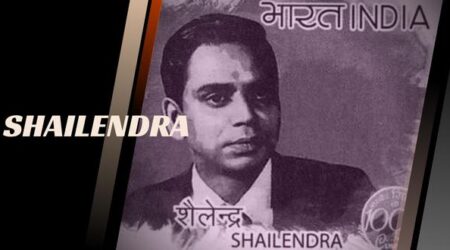
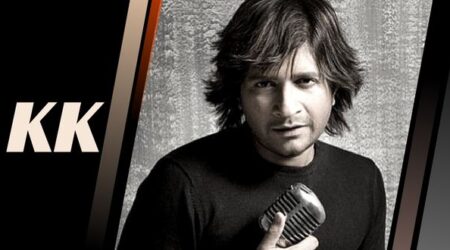
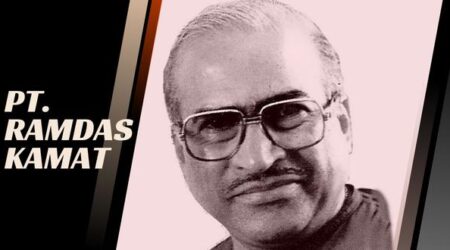
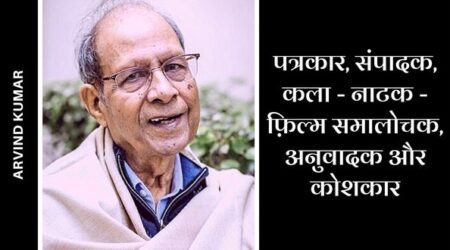
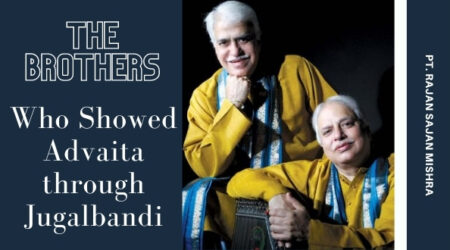
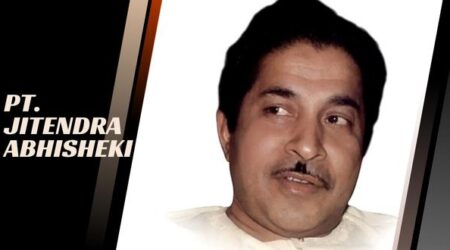
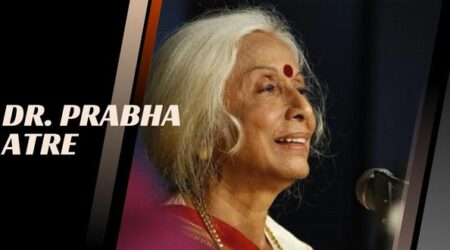

Comments (6)
Brilliant and indepth write up as always from rameshji
Amazing analysis. Rammesh here writes with the preciseness of a sports statistician and the excitement of a good commentator.
Full of good information and heartfelt emotion at the same time.
SDB – RAFI is canorous combo
Dil Ka Bhanwar Kare Pukar
Khoya Khoya Chand Khula Aasman
Hum Bekhudi Mein Tum Ko Pukarey
Hum Aap Ki Aankhon Mei (solo VIOLIN by Anthony Gonsalvis)
and many more
Reading this I was taken aback to my childhood. My dad used to play heavy records at the speed of 78 RPM. Singers were S.D. Burman, K. L. Saigal, Kanan Devi, Gita Dutt, Suraiya and so on and on.
Honestly speaking, I never used to like them but we were bound to listen to them as staying in same home.
Slowly, slowly I developed ears and taste to listen to them.
Now so much I am in it that I love them.
K B Ramesh’s writing has been always fabulous and topics selected by him are appreciable.
Thanks to such heartfelt, well-written, and well-researched articles, the true legacy of such towering giants is kept alive in the messy world of the internet. Enjoyed yet another article by KV and team, which has encouraged me to explore the golden age of Indian cinema yet again.
Waah, best analysis